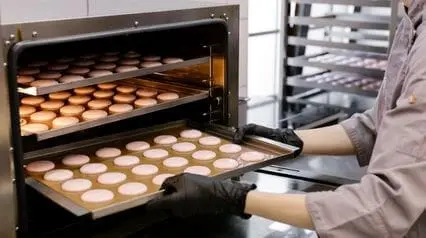What is Batch Production?
Batch production is a manufacturing method wherein a group of identical products are produced in one batch instead of one at a time. These sets of products are manufactured within a specific timeframe and according to a predetermined interval. Products in a batch then go through different steps of the manufacturing process together, and after, they will be evaluated as a group accordingly.
Why Use Batch Production in Manufacturing?
Batch production is often the ideal manufacturing operation for similar products or multiple products of one design. It is up to the manufacturer to decide how many items should be made for one batch, and this can change anytime. For products of the same or similar kind, batch production is a good way to ensure all quality standards are controlled and met.
Another reason quality is easily controlled through batch production is because of how it is done. For batch production processes, the machinery needed for the manufacturing processes, such as an assembly line, is usually already set in order of what needs to be done first to last.
However, no two batches can be on the same manufacturing step together. Each batch of raw or partially-made materials goes through the manufacturing process one step at a time. And if there is a batch currently still undergoing a certain stage in the manufacturing process, the batch following it cannot start on it yet until that first batch is done. This ensures that each batch is thoroughly inspected for issues and quality checks before moving on to the next manufacturing process or quality control step.
A manufacturing system aims to produce output of the highest quality, at the lowest cost, and the shortest amount of time by constantly improving processes and equipment. Batch production can be more cost-effective for some businesses. If some have machinery that allows them to automate the process, it can help them allocate their time for other tasks. Batch production also allows for more variety in the kinds of products that can be produced, as each batch can be made of different materials yet still go through the same or similar processes.
Advantages and Disadvantages
The advantages of batch production are:
- Reduced unit costs, as creating in bulk is cheaper
- Addressed customer needs, such as different sizes and colors
- Less manual work, as the machinery will do most of it
Meanwhile, the disadvantages are:
- Possible lost time from changing, fixing, or resetting machines
- Loss of motivation for staff, if there is not much to do
Batch Production Examples

The most common products created from batch production are things we use in our daily lives. This is because these things are often needed immediately and by many all at once, and they often come in different forms, designs, or styles as well. Batch production will then produce results faster and it easier to quality control.
Some examples of items produced in batches are:
- Soap
- Food products such as meals, baked goods, and the like
- Clothing in different sizes and designs
- Sporting goods
- Electrical goods
- Newspapers, magazines, and books
- Computer chips
FAQs about Batch Production
For some, batch production may be cheaper. Creating things in bulk is proven to be cheaper in the long run, but for others, it may be more expensive. Storing many products from batch production, in particular, can make batch production more expensive and not ideal.
Small batch production is the same as batch production, except that the batches are smaller compared to others. This is often used for smaller businesses where orders do not come in regularly or if there are not a lot of raw materials.
In batch production, no two batches can go through the same process at the same time. On the other hand, mass production allows for items to be created all at the same time. Items can still be grouped into batches, but multiple batches can be going through the same manufacturing process all at once.



